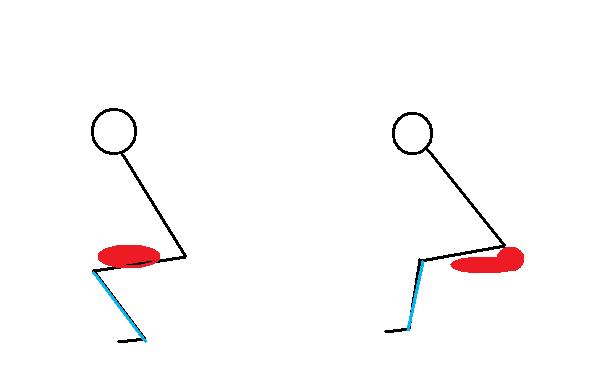There’s a prevalent issue of quad-dominance among many individuals. With prolonged periods of sitting and sedentary lifestyles, most people lack proper movement patterns and tend to be quad-dominant. Moreover, back pain often contributes to weakness in the glutes, and weak glutes can, in turn, exacerbate back pain. However, having well-functioning and strong glutes can unlock significant strength, power, and even aesthetic potential for those who prioritize it.
Unless you’re new to the gym, you might find yourself, like me, feeling a bit bored with the same old movement patterns. Our minds, just like our bodies, crave novelty and fresh challenges. While it may sometimes appear unconventional, I enjoy creating new exercises to continually challenge my body and find innovative ways to target muscles. Additionally, I often adapt exercises for clients who require different stimuli compared to myself or past clients. In this post, I’ll be discussing glute exercises that fall into that innovative category, so it’s important to provide some technique explanation before diving into critique. When performed with proper form, these glute exercises can be incredibly effective, and often, making slight adjustments in technique can enhance the activation of the glutes, delivering the results you desire.
1. Single Leg Cable Squat
In most cases, traditional squatting exercises primarily engage the quadriceps (depicted in the left image below). However, by adjusting your form to position your shin bones behind the point of being perpendicular to the floor (illustrated in the right image below), you can effectively shift the stress onto the major squatting muscles—hips, glutes, lower back, and hamstrings. This modification maximizes the activation of these crucial muscle groups, fostering balanced muscle development and reducing the risk of quad dominance.

The squat depicted on the left, with the knees extending past the toes, primarily targets the quadriceps, whereas the squat illustrated on the right, with the knees positioned behind the toes, emphasizes the activation of the glutes and hamstrings (depicted in red). While executing the latter squat form in free air may pose challenges, it becomes feasible when performed with a cable machine.
In the video provided above, a single-leg squat is demonstrated, utilizing a cable to counteract a small portion of your body weight. Pay close attention to the angle of the front shin bone, as it plays a crucial role in maximizing the engagement of targeted muscle groups.
When the shins extend past perpendicular during this type of squat, it becomes an effective option for knee injury rehabilitation. By placing the majority of the weight on the heels rather than the toes, this technique reduces shear pressure on the knee joint and recruits the hamstrings and glutes. As Louie Simmons aptly pointed out, if your knee is positioned behind your foot during the squat, the only way to rise is through a “hamstring curl.”
In the provided video, you’ll notice that the knee briefly rests on the floor before returning to a standing position. This temporary pause breaks the eccentric-concentric chain, facilitating the development of explosive power from a relaxed state. Essentially, this requires your legs (and glutes) to generate strength and power without relying on the stretch-shortening cycle typically present in regular squatting movements.
To increase the difficulty of this exercise, reduce the weight on the cable machine. With your shin positioned vertically and your torso leaning forward, you’ll experience significant activation in your glutes. This adjustment ensures you’re getting a serious burn in your glute muscles.
2. Hip to Shoulder Bridge (Mount Escape Hip Extensions)
This exercise is highly effective as it alternates between targeting the glutes and engaging the core in anti-rotation and anti-extension. It offers comprehensive benefits for the entire body, making it suitable for warm-ups, hip mobility work, and conditioning. Incorporating it into circuit-style training with high repetitions enhances its effectiveness for overall strength and endurance. A healthy neck is a prerequisite!
3. Assisted Pistol Squat
Here’s a modified version of the pistol squat designed to be more accessible for individuals with limited mobility and strength. Compared to the traditional pistol squat, this variation imposes fewer demands on ankle, hip, and thoracic spine mobility, while placing less strain on the quadriceps and more emphasis on the glutes and hamstrings. Essentially, it’s gentler on less flexible bodies, easier on the knees, and prioritizes glute activation over quad engagement.
If you struggle with knee pain during a standard pistol squat or experience discomfort, this variation minimizes shear force on the knee joint by keeping the shin closer to vertical. To adjust the intensity, pay attention to how much you rely on your arms for support; reducing arm involvement can increase the challenge. You might even try using just your fingertips for assistance.
4. Skater to Curtsy Squat
Maintain a neutral back position and ensure your knees align over your toes. Slide your non-supporting foot either to the side, back, or cross behind your body, while keeping your weight off the sliding foot. This technique helps maintain the intensity on your glutes and hamstrings. Please note that this video is playing at 2X speed.
4. BOSU Single Leg Hip Thrust
This exercise falls somewhere between the easier Foot on Floor version and the more challenging Foot on Bench variation.
Incorporating the BOSU was a personal choice tailored to my needs as a surf enthusiast. Occasionally integrating stability challenges into strength training can be beneficial for developing surf-related skills. Unstable surface training is also valuable in rehabilitation settings to engage joint stabilizers and target less commonly used muscles.
The exercise described above is intense—prepare to feel the burn. If you’re skeptical this this would be challenging, aim for fifteen reps per set and witness the results firsthand.
5. Barbell Hip Bridge
To strengthen your glutes effectively, hip extensions can be performed with a loaded barbell positioned across the hip crease. To prevent excessive pressure, place barbell padding or a yoga mat between the bar and your hips. Focus on achieving full hip extension rather than back extension during the movement. Ensure that your glutes and hamstrings are engaged in lifting the weight, avoiding over-reliance on your lower back muscles.
6. Explosive Barbell Hip Bridge
To enhance glute strength and power, incorporate loaded hip extensions with a barbell positioned across the hip crease. To prevent undue pressure, place barbell padding or a yoga mat between the bar and your hips. Focus on achieving complete hip extension rather than arching your back. Engage your glutes and hamstrings to lift the weight, ensuring minimal involvement of your lower back muscles.
Putting It All Together
Mixing up your training is key to consistent progress, results and mental compliance. I think the broader your can keep your training – incorporating a variety of lifts, training styles and program designs – the more mature and cultured your athletic development will be, leading to a wider variety of movement options in life.
